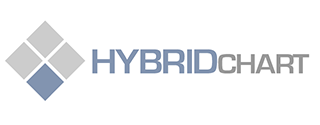Does the thought of implementing a new software tool for your doctors make you want to pull your hair out? Here are five tips to make the process a little less painful.
1. Define Your Goals and Set Expectations |
Before you even begin the implementation process, it is important to understand exactly what your practice’s specific needs are with regard to the software. Start with the big picture objectives – What are we trying to accomplish with this software? How will we define success with this software? What parts of the software do we absolutely need to use to accomplish our goals, and are there some parts we can do without or wait to start using? Once your big picture objectives are established, it’s easier to define smaller, more specific objectives. New software can be intimidating for some doctors, and it’s often seen as a burden and a hindrance to what they really want to be doing – taking care of patients. Ensuring that there is good understanding of how this tool will help doctors ultimately take better care of patients and/or how it will make their lives easier will go a long way. Be clear with your doctors about what you’re trying to accomplish and what your expectations are. Poorly defined expectations are the road to confusion and non-compliance. |
| 2. Know Your Doctors |
Are your doctors technologically savvy? Do you suspect that they will let go of paper processes with their cold, dead hands? Are they somewhere in the middle? Anticipating their concerns and struggles ahead of time allows you to better plan for them. Some ideas to consider – Can you buddy up a tech friendly doc with a not-so tech friendly doc so they can learn from each other? Can you allot extra support resources to ensure success and compliance? Do you have alternative training resources in mind for someone who may need extra help? Another piece of knowing your doctors is having a realistic understanding of their day-to-day workflow. It’s easy to make an assumption about how things ought to be, but whether or not they really work that way in practice is a different story. As much as possible, adapt the software to their workflow – not the other way around. |
| 3. Take Baby Steps |
If you think back to your big objectives, remember that you don’t necessarily need to use every cool bell and whistle of a piece of software. Particularly with doctors who are not particularly tech savvy, it can be helpful to establish core objectives and only ask them to focus on those. Once they’ve gotten comfortable with the core objectives, you can move on to other features. Starting slowly also makes for easier trouble shooting should a problem arise.
|
| 4. Have a Provider Champion |
If you’ve ever been involved in software implementation (in the healthcare space or not) you probably know that when one person starts saying negative things about a piece of software the negativity spreads quickly. A Physician (or Midlevel) Champion can make all the difference. Ideally, the Champion is someone who is tech savvy, can get comfortable with the software quickly, and finds it useful. Hearing positive feedback from a peer about software from the get-go can help stop the cycle of negativity before it starts. Additionally, Providers can provide workflow insight and spot certain pitfalls and potential problems before anyone else. This will help the entire process go more smoothly. |
| 5. Communicate, Communicate, Communicate |
As a rule, doctors are notoriously bad at checking email, but who can blame them? They’re over-burdened as it is. Communicate about new software early and often. Use any means necessary – texting, notes, carrier pigeon, regular provider meetings – to be sure that they know about the new software, what the expectations are for them, and allow them time for feedback and questions. It’s also not unusual for providers to assume that every piece of technology will be as difficult to implement as notoriously difficult software like EMRs or PACS systems. Part of a good communication strategy is providing clarity about what kind of learning curve and time investment is necessary. Surprises are no one’s friend during software implementation. |
We hope that these strategies help make software implementation a little easier for you.
Need a rounding/charge capture tool that’s easy to use, tailored for your practice, and implemented by one of the best teams in the business? Contact us at info@hybridchart.com.



